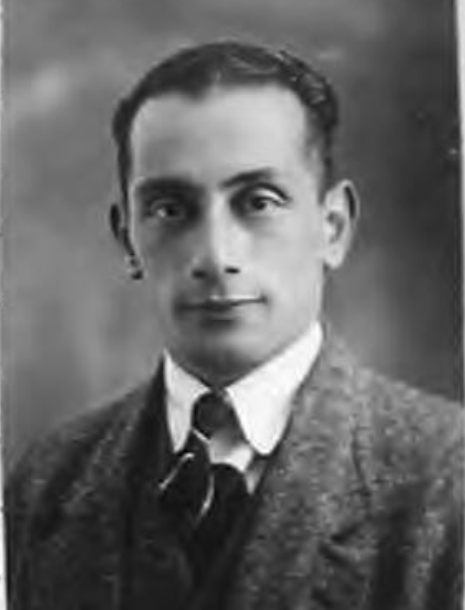Maurits Wessels
Maurits Wessels became the owner of the building at Prinsengracht 263 in 1943.
Maurits Wessels was a waste paper merchant, market vendor, and manufacturer of pudding powder. From 22 April 1943 on he was the owner of Prinsengracht 263.[1]
The parental family card from The Hague lists the whole Wessels family as having the religious affiliation 'N.I.' (Dutch Israelite).[2] He married the Jewish Sophia Hakker in 1937. His parents-in-law, several brothers-in-law and sisters-in-law and several nieces and nephews were killed in Sobibor and Auschwitz.[3] At the end of 1942, the Wessels family was classified as non-Jewish by the German lawyer Calmeyer.[4] W.F. Wessels from The Hague (an uncle) wrote Calmeyer a letter of thanks, mentioning that 78 relatives had been saved by this development.[5]
Initially, Wessels was a workman at the paper company Lierens, where his sister was a clerk.[6] In 1938, he was listed as a waste paper dealer.[7] In 1939, he and his wife also had a permit for the market on Uilenburg, where they sold fountain pen holders and assorted goods.[8] His first marriage failed. Wessels married for the second time in 1947.[9]
On 22 April 1943, Wessels bought the plot at Prinsengracht 263 from Pieron.[10] Wessels also bought properties in the Kinkerbuurt and De Pijp districts on 5 and 12 February 1943.[11] During the war years, Wessels had repeated run ins with the Price Control department. Reports were filed about irregularities with milk powder, saccharine, surrogate baking powder, pudding powder and real estate.[12] On 29 September 1944, he was arrested by an officer of the Price Control department and taken to the Police Headquarters for doing business despite a ban.[13]
Source personal data (date and place of death unknown).[12] Addresses: Van Woustraat 184 I, Amsterdam;[10] Noorder Amstellaan 29 I.[13]
Footnotes
- ^ Anne refers to him as: the new landlord. Anne Frank, Diary Version B, 27 February 1943, in: The Collected Works, transl. from the Dutch by Susan Massotty, London [etc.]: Bloomsbury Continuum, 2019.
- ^ Bevolkingsregister Den Haag, Digitale Stamboom Den Haag: Gezinskaart J. Wessels (1886).
- ^ Zie http://www.joodsmonument.nl (geraadpleegd juli 2012).
- ^ Peter Niebaum, Hans Calmeyer, ein “anderer Deutscher” im zwanzigsten Jahrhundert, Berlijn: Frank & Timme, 2011, p. 26.
- ^ NIOD Instituut voor Oorlogs-, Holocaust- en Genocidestudies, Amsterdam, DOC I 271: W.F. Wessels aan Calmeyer, 24 december 1942.
- ^ Stadsarchief Amsterdam (SAA), Dienst Bevolkingsregister, Gezinskaarten (toegangsnummer 5422): Gezinskaart Jozef Wessels (1886).
- ^ Algemeen Adresboek voor de stad Amsterdam 1938, p. 1421.
- ^ SAA, Dienst Marktwezen: Marktkaarten, inv. nr. 7: Vergunning nr. 498.
- ^ Zie http://www.maxvandam.info/humo-gen/family/humo9_/F17474/I46525/ (geraadpleegd juli 2012).
- a, b Kadaster Amsterdam, Koopakte 3305/4, 22 april 1943.
- ^ Kadaster Amsterdam, Akte van scheiding en deling 3418/101, 12 mei 1947.
- a, b Noord-Hollands Archief, Haarlem, Prijsbeheersing, inv. nr. 4: Kaartsysteem verdachten.
- a, b SAA, Gemeentepolitie Amsterdam, inv. nr. 2058: Rapport 73, H.B. Economische Zaken, 29-30 september 1944, mut. 17.30,
